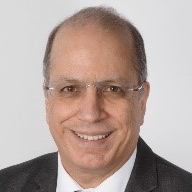Simulation of the Acoustic Behaviour of Ship-Propeller Configurations with and without Cavitation
A special issue of Journal of Marine Science and Engineering (ISSN 2077-1312). This special issue belongs to the section "Ocean Engineering".
Deadline for manuscript submissions: closed (10 October 2021) | Viewed by 10076
Special Issue Editor
Interests: hydrodynamics: naval architecture; fluid mechanics; hydrodynamic modeling numerical modelling; CFD simulation; fluid structure interaction; computational fluid mechanics; underwater acoustics, experimental fluid mechanics
Special Issues, Collections and Topics in MDPI journals
Special Issue Information
Dear Colleagues,
At least since the late 1990s, acoustic pollution of the marine environment has been the subject of discussion between the maritime industry, environmentalists, and politicians. The significant anthropogenic noise impact is caused by sea transport. Large tankers or bulkers cause noise levels of up to 205 decibels due to engine noise, propellers, cavitation, and hull vibration. The oceans of the northern hemisphere are now characterized by diffuse noise caused by ships in the frequency range between 100 and 300 Hz, with the sound spectrum of ships being in the frequency range from 10 Hz to 4 kHz. Since a considerable amount of experimental and numerical research is currently being conducted and substantial progress has been made in analyzing noise generation and propagation, the aim of this Special Issue is to provide a comprehensive summary of the state of development in this field. You are invited to present your latest developments and results on one of the topics listed below. We encourage you to send us articles on other relevant topics.
Prof. Dr. Eng. Moustafa Abdel-Maksoud
Guest Editor
Manuscript Submission Information
Manuscripts should be submitted online at www.mdpi.com by registering and logging in to this website. Once you are registered, click here to go to the submission form. Manuscripts can be submitted until the deadline. All submissions that pass pre-check are peer-reviewed. Accepted papers will be published continuously in the journal (as soon as accepted) and will be listed together on the special issue website. Research articles, review articles as well as short communications are invited. For planned papers, a title and short abstract (about 100 words) can be sent to the Editorial Office for announcement on this website.
Submitted manuscripts should not have been published previously, nor be under consideration for publication elsewhere (except conference proceedings papers). All manuscripts are thoroughly refereed through a single-blind peer-review process. A guide for authors and other relevant information for submission of manuscripts is available on the Instructions for Authors page. Journal of Marine Science and Engineering is an international peer-reviewed open access monthly journal published by MDPI.
Please visit the Instructions for Authors page before submitting a manuscript. The Article Processing Charge (APC) for publication in this open access journal is 2600 CHF (Swiss Francs). Submitted papers should be well formatted and use good English. Authors may use MDPI's English editing service prior to publication or during author revisions.
Keywords
- Computational modelling techniques for cavitation noise based on high-fidelity CFD simulations
- Numercal methods to compute the noise sources of cavitating and non-cavitating propellers
- Development of numerical methods for simulation far-field sound propagation
- Calculation methods of noise impact induced by marine propeller under consideration of fluid–structure–interaction
- Experimental techniques for characterising acoustic of propellers in near and far field
- Full-scale measurements for noise radiation induced by ships in deep and shallow water
- Validation studies and development of scaling procedures for cavitation noise





